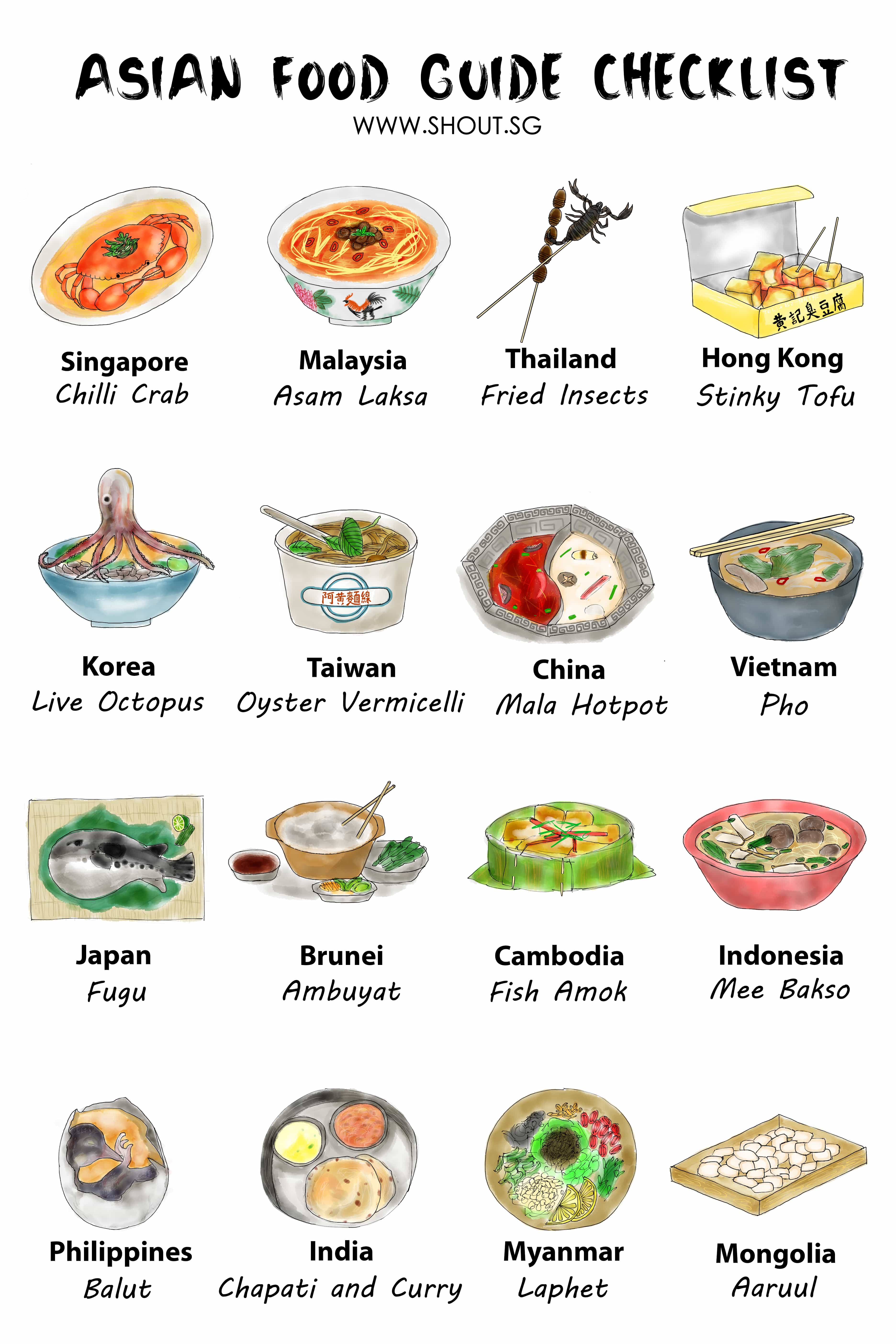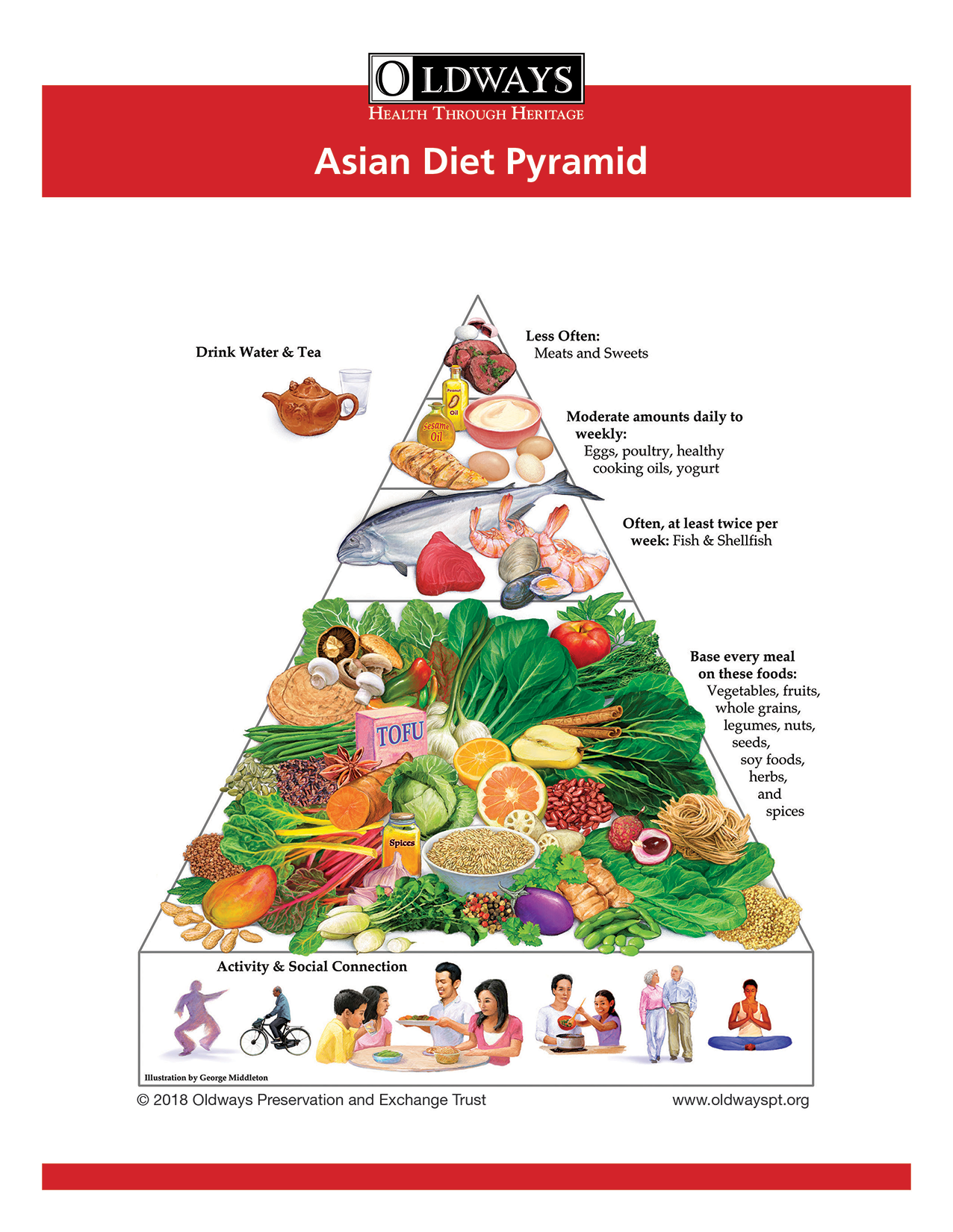The Ultimate Asian Food Guide: A Culinary Journey Across the Continent
Asian cuisine is renowned worldwide for its vibrant flavors, diverse ingredients, and unique cooking techniques. From the fragrant spices of India to the delicate sushi of Japan, Asian food offers something for everyone. Whether you’re new to Asian food or a seasoned enthusiast, this guide will take you through the essential dishes, cooking styles, and ingredients that define Asian culinary traditions.
In this comprehensive Asian Food Guide, we’ll explore the top cuisines from across the continent, offering tips on how to enjoy them and suggestions for those who want to dive deeper into the rich flavors of Asia.

1. Understanding Asian Cuisine: A Diverse Tradition
Asian cuisine encompasses a wide range of flavors, ingredients, and cooking methods that vary greatly from country to country. It’s a melting pot of cultures, and every region brings something unique to the table.
Key Characteristics of Asian Food
-
Balance of Flavors: Asian dishes often balance salty, sweet, sour, and bitter flavors to create harmonious meals.
-
Rice and Noodles: These are staples in many Asian cuisines, served as side dishes or the main course.
-
Fresh Ingredients: Herbs like basil, cilantro, and mint, as well as fresh vegetables, are commonly used in most Asian cooking.
-
Spices and Sauces: The use of spices and sauces is critical. Ingredients like ginger, garlic, soy sauce, and chili create the bold flavors that define the cuisine.
Popular Asian Cuisines
Some of the most popular Asian cuisines include:
-
Chinese
-
Japanese
-
Indian
-
Thai
-
Vietnamese
-
Korean
Each cuisine has its own distinctive flavors and cooking techniques that make it stand out. In the following sections, we’ll take a deeper dive into each of these.
2. Chinese Cuisine: The Art of Stir-Fry and Dim Sum
Chinese food is one of the most well-known Asian cuisines, and it’s beloved for its rich flavors and textures. From stir-fry dishes to dim sum and Peking duck, Chinese food offers something for everyone.
Staple Ingredients in Chinese Cuisine
-
Soy Sauce: Used for flavoring and marinating.
-
Rice and Noodles: Served in various forms, such as fried rice, steamed rice, or noodle soups.
-
Ginger and Garlic: Essential for adding depth to Chinese dishes.
-
Tofu and Pork: Common protein sources used in stir-fries and stews.
Signature Dishes
-
Peking Duck: A must-try in Beijing, known for its crispy skin and tender meat.
-
Sweet and Sour Pork: A popular dish featuring pork with a tangy, sweet sauce.
-
Dim Sum: A variety of small steamed dumplings, buns, and pastries, often served during brunch.
For more on Chinese recipes, visit our section on DUYTHIN.DIGITAL for automation tools to help share these recipes across platforms.

3. Japanese Cuisine: The Delicate Balance of Simplicity
Japanese food is known for its emphasis on fresh, high-quality ingredients and minimalistic preparation. Sushi and sashimi are the most well-known Japanese dishes, but the cuisine also offers a variety of soups, noodle dishes, and rice-based meals.
Staple Ingredients in Japanese Cuisine
-
Rice: Short-grain rice is a fundamental ingredient in many Japanese dishes.
-
Fish: Particularly sashimi-grade raw fish like tuna, salmon, and mackerel.
-
Soy Sauce and Wasabi: Used for seasoning and enhancing flavor.
-
Miso: A fermented soybean paste, essential for soups and marinades.
Signature Dishes
-
Sushi: Vinegar-seasoned rice topped with raw fish, vegetables, or egg.
-
Ramen: Noodle soup made with rich broth, noodles, and a variety of toppings.
-
Tempura: Lightly battered and fried vegetables or seafood.
For a more in-depth exploration of Japanese food, check out our detailed blog posts on DUYTHIN.DIGITAL.
4. Indian Cuisine: Bold Spices and Rich Flavors
Indian food is a blend of spices and aromatic herbs, resulting in deeply flavorful and often complex dishes. It’s known for its wide variety of vegetarian options and its use of spices like cumin, coriander, and turmeric.
Staple Ingredients in Indian Cuisine
-
Rice and Roti: Both are staples in many Indian meals.
-
Lentils and Chickpeas: Common sources of protein in vegetarian dishes.
-
Spices: Cardamom, cinnamon, and garam masala are just a few of the spices used.
-
Ghee: Clarified butter, used in cooking for its rich flavor.
Signature Dishes
-
Biryani: A fragrant rice dish with meat, vegetables, and spices.
-
Butter Chicken: A creamy tomato-based curry with tender chicken.
-
Samosas: Fried pastry pockets filled with spiced potatoes, peas, and sometimes meat.
Indian Sweets
-
Gulab Jamun: Sweet, deep-fried dough soaked in sugar syrup.
-
Kheer: A rice pudding flavored with cardamom and saffron.
For more on Indian food recipes and cooking techniques, explore our related articles on DUYTHIN.DIGITAL.
5. Thai Cuisine: A Symphony of Sweet, Sour, and Spicy
Thai food is a delicious balance of sweet, sour, salty, and spicy flavors. Known for its use of herbs and spices, Thai food often features fresh vegetables and seafood.
Staple Ingredients in Thai Cuisine
-
Lemongrass: A key herb for flavoring soups and curries.
-
Fish Sauce: Adds a savory, salty depth to many dishes.
-
Chili and Lime: Essential for bringing heat and brightness to dishes.
Signature Dishes
-
Pad Thai: Stir-fried noodles with eggs, shrimp, tofu, peanuts, and bean sprouts.
-
Tom Yum: A spicy and sour soup with shrimp, mushrooms, and lemongrass.
-
Green Curry: A rich coconut milk-based curry with green chili and vegetables.
For more on Thai cooking techniques, visit DUYTHIN.DIGITAL for automation tools to help spread your food content.

6. Vietnamese Cuisine: Fresh, Light, and Flavorful
Vietnamese food is known for its light, fresh, and herbaceous flavors. It’s a cuisine that often features fresh herbs and vegetables in combination with lean proteins like chicken, pork, or beef.
Staple Ingredients in Vietnamese Cuisine
-
Rice Noodles: Often used in soups like Pho.
-
Herbs: Mint, cilantro, and Thai basil are common in many dishes.
-
Fish Sauce: Used for seasoning and dipping sauces.
-
Lime and Chili: Essential for bringing freshness and heat.
Signature Dishes
-
Pho: A fragrant noodle soup made with a clear broth, rice noodles, and meat, usually beef or chicken.
-
Banh Mi: A Vietnamese sandwich made with a crispy baguette filled with meat, vegetables, and herbs.
-
Goi Cuon: Fresh spring rolls filled with shrimp, pork, or tofu, along with herbs and vermicelli noodles.
Frequently Asked Questions (FAQs)
What are the most common spices used in Asian cuisine?
Asian cuisines often rely on a variety of spices such as ginger, garlic, chili, cumin, and coriander. These spices help create the bold flavors that characterize many Asian dishes.
How can I make Asian food at home?
Making Asian food at home is easier than you think! Start by gathering essential ingredients like soy sauce, rice, and spices. Then, explore simple recipes like fried rice, ramen, or spring rolls for a beginner-friendly experience.
What makes Asian food unique?
The balance of flavors, the use of fresh ingredients, and the emphasis on spices make Asian cuisine stand out. It combines healthy eating with bold, aromatic flavors that make every dish exciting.
Asian food offers an endless variety of flavors and textures that cater to all tastes and preferences. From Chinese stir-fries to Indian curries, there is something for everyone to enjoy. By exploring the many regions and dishes of Asia, you can broaden your culinary horizons and experience the rich culture behind every meal.
For more tips on Asian cooking and food-related content, visit DUYTHIN.DIGITAL and enhance your online presence with our specialized automation tools.




